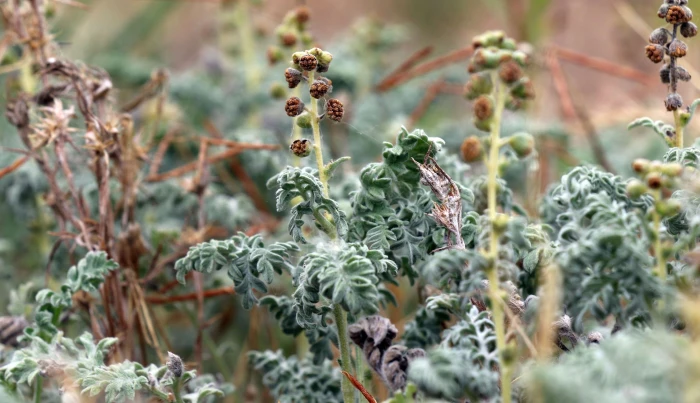San Diego Ragweed
(Ambrosia pumila)
San Diego Ragweed (Ambrosia pumila)
/
/

Pacific Southwest Region USFWS from Sacramento, US
Public domain
Image By:
Pacific Southwest Region USFWS from Sacramento, US
Recorded By:
Copyright:
Public domain
Copyright Notice:
Photo by: Pacific Southwest Region USFWS from Sacramento, US | License Type: Public domain | License URL: https://creativecommons.org/public-domain/ | Uploader: OceanAtoll | Publisher: Wikimedia Commons | Title: San_Diego_Ambrosia_is_an_endangered_species_(34867117876).jpg | Notes: |
















Estimated Native Range
Climate Requirements for Essen, Germany
| This Plant | Your Site | Plant Suitability for Your Location | ||
|---|---|---|---|---|
| • Precipitation | 3" - 34" | 36" | Aquatic | Aquatic |
| • High Temp. | 77°F - 99°F | 75°F | OK, but your summers are milder than normal for this plant | OK |
| • Low Temp. | 36°F - 47°F | 33°F | Your winter temperatures may be too cold for this plant | Too cold |
This plant may not grow well at your location - your precipitation is too high.
Summary
Ambrosia pumila, commonly known as San Diego Ragweed, is a semi-deciduous perennial herb that is native to the vernal pools, grasslands, and coastal sage scrub of Southern California and Baja California. It typically grows to a height of 0.2-0.5 feet and can spread 2-3 feet wide. The plant has a hairy appearance and is adapted to survive in its native Mediterranean climate with wet winters and dry summers.
San Diego Ragweed is valued for its low water requirements and ability to thrive in full sun to part shade, making it suitable for xeriscaping and naturalistic plantings in arid regions. It is often used in restoration projects due to its native status and ecological role in supporting local wildlife. Despite its common name, it is not as allergenic as other ragweed species, making it a more favorable choice for gardens. Cultivation requires well-drained soils, and the plant is drought-tolerant once established. It is important to note that Ambrosia pumila is considered rare and endangered in its natural habitat, so gardeners should source plants responsibly.CC BY-SA 4.0
San Diego Ragweed is valued for its low water requirements and ability to thrive in full sun to part shade, making it suitable for xeriscaping and naturalistic plantings in arid regions. It is often used in restoration projects due to its native status and ecological role in supporting local wildlife. Despite its common name, it is not as allergenic as other ragweed species, making it a more favorable choice for gardens. Cultivation requires well-drained soils, and the plant is drought-tolerant once established. It is important to note that Ambrosia pumila is considered rare and endangered in its natural habitat, so gardeners should source plants responsibly.CC BY-SA 4.0
Plant Description
- Plant Type: Herb
- Height: 0.5-1.5 feet
- Width: 2-3 feet
- Growth Rate: Moderate
- Flower Color: N/A
- Flowering Season: Fall, Spring, Summer
- Leaf Retention: Semi-Deciduous
Growth Requirements
- Sun: Full Sun, Part Shade
- Water: Low, Medium
- Drainage: Medium
Common Uses
Bee Garden, Bird Garden, Low Maintenance
Natural Habitat
native to the vernal pools, grasslands, and coastal sage scrub of Southern California and Baja California
Other Names
Common Names: Dwarf Bur Ragweed, San Diego Ambrosia
Scientific Names: Ambrosia pumila, Franseria pumila, Hemiambrosia heterocephala
GBIF Accepted Name: Ambrosia pumila (Nutt.) A.Gray